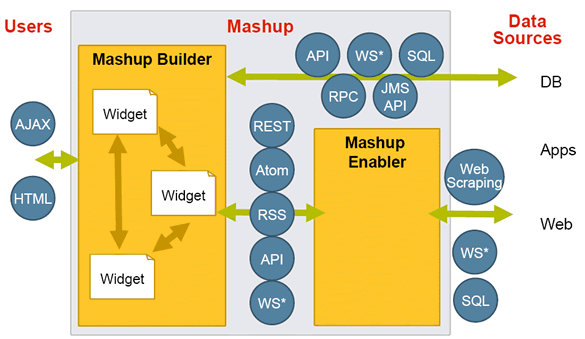Sun has now uploaded the transcripts and audio from my JavaOne presentation about Mashups earlier this month. Both the PDF of the presentation, the audio and the transcript can now be found at the SDN’s JavaOne site. You need to be a member of the Sun Developer Network (SDN) to see it, but membership is free so don’t let that stop you.
The official title of the presentation is “Integration Gets All Mashed Up – Bridging Web 1.0 and Web 2.0 Applications”, and it is an overview of what mashups are, what technologies are involved and how the different components fit together inside a mashup. It was a lot of work getting the presentation together, but it was well worth it since I got a lot of good feedback from people (thanks to eveybody that came and heard me speak!).
The presentation starts out with the standard (= Wikipedia) definition of mashups and then move on to describing the enabling technologies such as REST, JSON, Atom and RSS. Of course all this is from a Java perspecive since it is after all a JavaOne presentation. Next are the components of a mashup such as Mashup Builders, Widgets, Mashup Enablers and how they all fit together.

Next I describe the the mashup programming model, which is a lightweight programming model that means that the focus is on assembling and not coding. In the end I highlight what it means to be a developer in a mashup world.
If you are in too much a hurry to go through the presentation I can give you the summary right here:
- Mashups are all about
- Building a situational application ad hoc
- Reuse and remix both data and funcitonality
- Using Mashups means that
- You can do more in less time
- You don’t have to reinvent the wheel
- You are not in total control of how your applications and data will be used
If you are interested in Mashups I hope that this presentation will give you a good overview. Please take a look and a listen and let me know what you think!